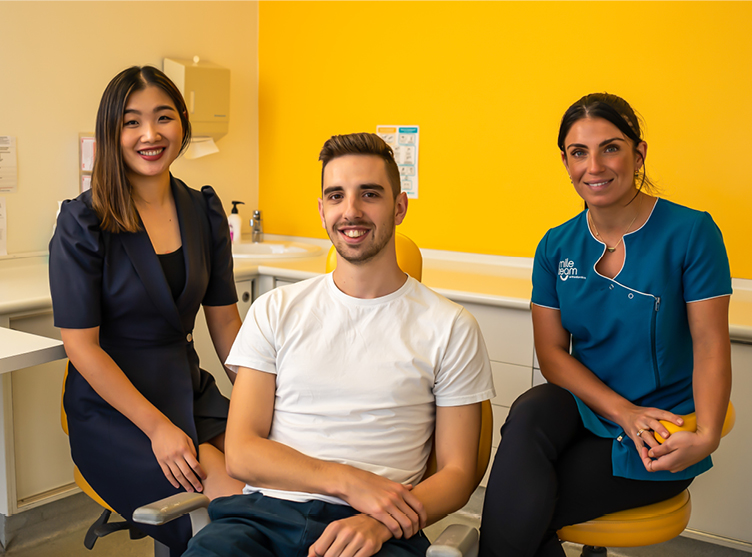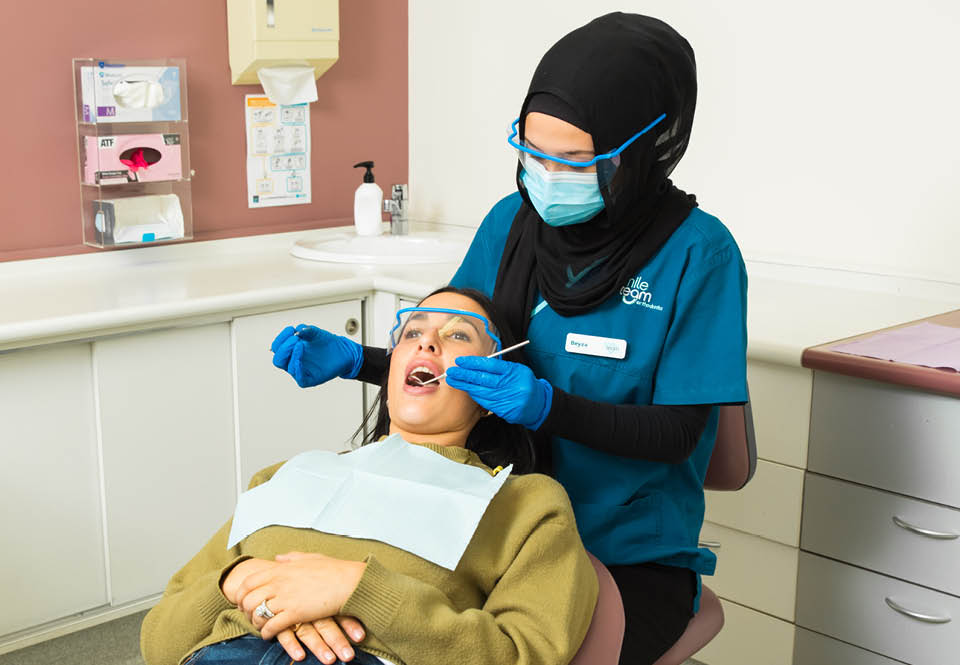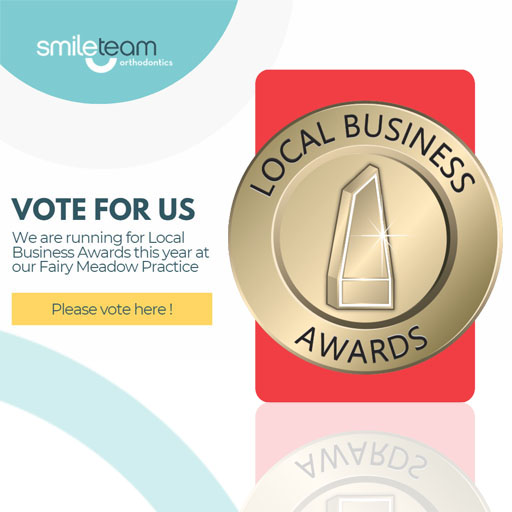
You may have already heard about orthodontic treatments by dentists or orthodontists to straighten teeth. In this blog, we’ll discuss all the options to correct bite problems involving your teeth and jaws. See it as a comprehensive guide to better understand orthodontic problems, how these teeth problems can be solved or even how braces could cause other issues.
What Is Orthodontic Treatment?
When a patient wants to straighten teeth, they can opt for orthodontic treatment. There are various types of braces treatment options, and they generally work by putting a gentle pressure on your teeth to push and pull them in the desired position. Whether you opt for removable clear aligners or fixed braces, on your lower, upper teeth or both; orthodontics can help achieve your dream smile and help make it easier to maintain your oral health.
When Is It Needed?
As with many things, ‘need’ is a broad concept. The most common reason for people to opt for their orthodontic treatments, is simply preferring the look of it. There is a range of bites, teeth positions and dental problems that orthodontics can solve:
Crowded teeth
Crowded teeth and crooked teeth are very common. The term already gives an indication of how this teeth bite is caused: by the lack of space in the mouth to fit all of the teeth. Apart from aesthetics, crooked teeth may make it harder to look after your oral health. So, getting braces can straighten crooked teeth and also make it easier to maintain a healthy smile.
Narrow smile
A narrow smile is when a person’s upper jaw and palate have a more tapered shape than the average mouth. You can recognise a narrow bite when a smile reveals around 6 front teeth. Missing teeth can also cause a smile to appear narrow. If you’re looking to correct a smile like this, you often can do so with orthodontic treatment.
Open bite
When the upper and lower teeth do not make contact in the front or back of the mouth, even when the jaw is shut, it’s called an open bite. This can cause difficulties when biting down and maintaining a healthy smile. While not all open bites can be corrected through orthodontic treatment, many can, so it’s always worth chatting to an orthodontist if you’re looking at orthodontics Australia.
Under bite
An under bite is a term for a case you can recognise as lower teeth that extend outward further than the upper front teeth. If you’re looking to align an under bite, an orthodontist can examine your mouth and see what treatment would suit you best.
Over bite
Unsurprisingly, an over bite is when the upper arch extend outward further than the lower jaw. Most people would have a slight overbite, and in most cases no treatments are required for slight overbite. However, if you have a severe over bite issues, this can lead to poor oral health or pain in your jaws.
Similar to an under- or even an open bite, when the issue stems from the jaw joints, it may prove more tricky to fix by simply wearing braces.
Spacing
Also referred to as gapped teeth, spacing simply refers to where there are gaps between the teeth, without missing teeth. In children, permanent teeth often appear spaced out at first, but often gaps naturally close. For adults who are conscious about spacing in your smile and want to change the appearance of their smile, an orthodontist can help with a suitable orthodontic treatment.
Jaw pain
Getting orthodontic treatment may effect both your teeth and jaws. So when you experience pain in your jaws, it may mean orthodontic treatment suits you too. A Temporomandibular Disorder diagnosis may mean the joint where your lower jaws meet the upper jaw can cause you discomfort. In some cases, orthodontic treatment to treat your teeth problems can also help relieve these pains.
What Happens During The Treatment?

Orthodontic treatment is all about moving teeth into their desired position. Whether this is through invisible braces or traditional metal braces, through consistent, gentle pressure they correct your teeth. There are different types of treatment options, or sometimes a combination of orthodontic treatments are used.
Different people, different treatments.
A dentist may involve plaster models, while an orthodontist may rely on different tools to reveal your current bite. While not every journey is the same, your orthodontist at Smile Team is here to make sure you understand every step along the way and are comfortable with the treatment that corrects teeth for you.
How Long Does It Take?
Regardless of what some of the other websites say, the time for the treatment depends on the severity of each patient. Your orthodontic treatment can take anywhere between a few months to a year or more. Your orthodontist or dentist can give you a clearer idea of the time it’ll take to straighten your teeth.
What Are The Benefits?
Completing your smile journey has two main benefits, for both adults and children:
Improved Oral Health
Straighter teeth are easier to properly clean through brushing and flossing, but also for your dentist at general checkups. Food particles can get stuck in hard to reach places, which can lead to tooth decay and gum disease.
Aesthetics
While improving the health of your teeth and gums is the biggest benefit you get from wearing braces, there is more: aesthetics. A straight smile can change your overall appearance. Plus, if you’re happier about the appearance of your smile, you’re likely to smile more as a result – which is good for your overall health too!
What Are The Risks?
All orthodontic treatments have some risks and limitations too. These are very manageable, but the most common ones are lined out below:
Oral health risks
While we previously mentioned straight teeth can improve your oral health, braces and wires make cleaning the teeth more difficult. This may increase the chance of tooth decay and permanent marks. It is important that teeth are cleaned thoroughly twice a day during orthodontic treatment to avoid these problems.
Soft tissue injury
Usually getting braces simply feel strange at the beginning, as they can take some getting used to. However, in some cases traditional braces may dig into the gums, causing damage to the soft tissues. But thanks to modern developments in this type of treatment, this is happening less and less.
Who Carries Out the Treatment?
While some general dentists offer orthodontics Australia, it’s recommended to visit an orthodontist. While dentists are the experts for your mouth, an orthodontist is specialised in aligning your teeth, with extensive experience and more in-depth knowledge about the orthodontic treatment needed to correct problems, especially for those with more severe problems.

How Do You Take Care Of Your Teeth During and After The Treatment?
Taking care of your new smile is key, both during and after the treatment. Here are ways to help make sure you get the most from your orthodontic treatment, no matter which journey suits you best. Mind you: your orthodontist will explain in detail how to best look after your teeth and gums during treatment too.
During The Treatment
The last thing you want when your new smile is revealed is to see staining on a tooth or multiple teeth. We want your orthodontic treatment to correct problems, not cause them. So looking after your oral health is absolutely key during your treatment. That doesn’t only mean brushing and flossing, but also minimising the chance of tooth decay and gum disease by not eating too much sugary food or indulging in soft drink.
Clear Aligners
While the main focus with clear aligners is wearing them consistently, it’s incredibly important to clean them once you take them out of your mouth. If not, the aligners can lock in the food particles causing staining or decay on your tooth or teeth. If something gets stuck in your tooth, it’s easier to get out thanks to the fact you can simply remove the aligners fully.
Traditional braces
While flossing may be tricky with traditional braces, brushing is still such an important way to look after your dental health during your treatment. Plus, if you get something stuck in your tooth, just grab an interdental brush to make sure it doesn’t cause any problems.
After The Treatment
Keep the good habits
Once you have the smile you’ve always dreamt of, don’t skip all the good habits you’ve built during your orthodontic treatment! Look after your pearly whites the normal way: brushing, flossing and regular visits to your dentist.
Retainer
Additionally, your orthodontist is likely to give you a set of night retainers. It’s key to wear them for as long as they recommended doing so, to make sure your teeth don’t move back.
Get the smile you’ve always wanted
There are so many people, both adults and children, who can benefit from orthodontic treatments. Not all bites need treatment, but straightened teeth can help you both emotionally, but mostly physically.
Start your journey today.
If you’re keen to talk to a specialist for a diagnosis, discuss treatment options and which option would suit you or your child best: Smile Team’s friendly team is here to help! Get in touch to arrange a complimentary smile consultation.
